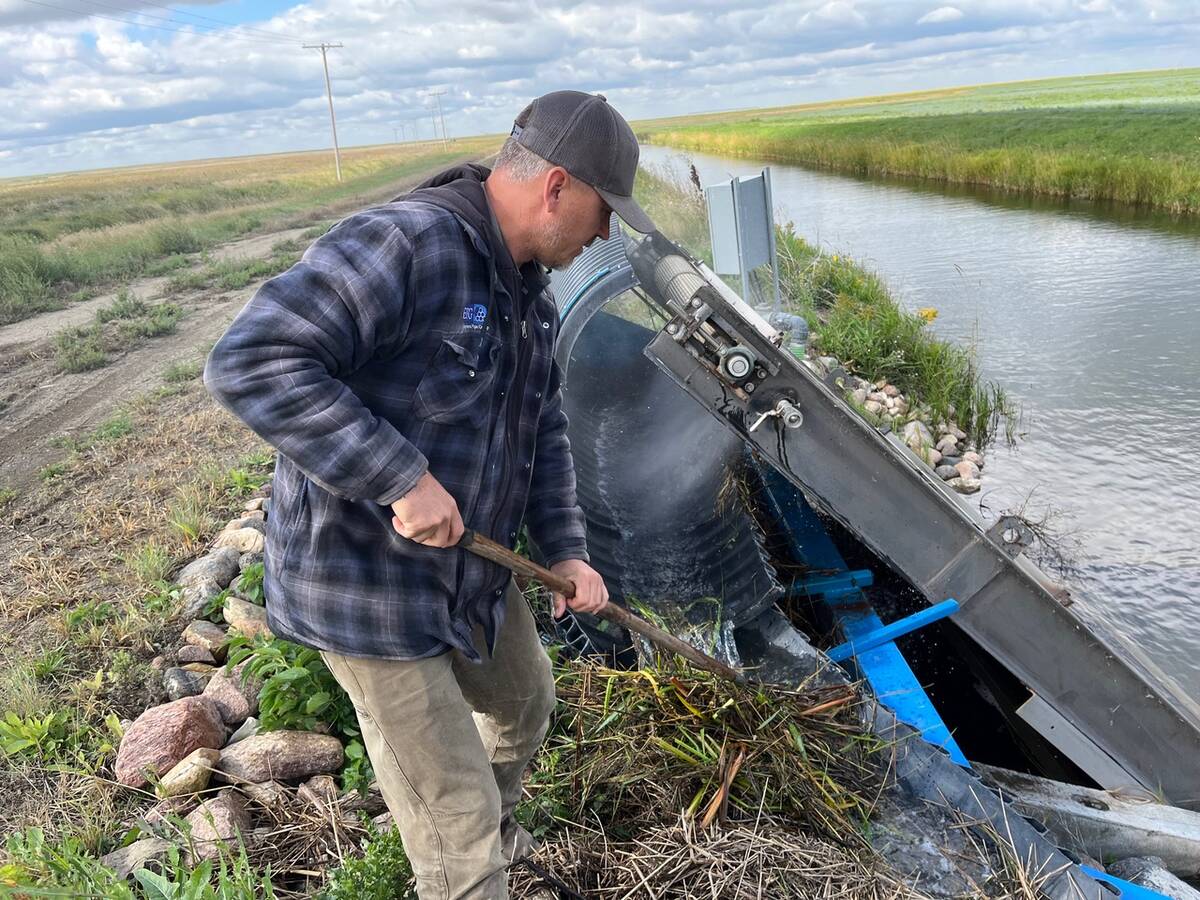SWIFT CURRENT, Sask. – The Agricultural Producers Association of Saskatchewan district meeting here drew a small crowd on a good haying day.
But president Glenn Blakley said the representation from rural municipalities was actually pretty strong in percentage terms.
There aren’t that many RM members in District 3 and APAS’s troubles over the past 18 months haven’t made it easy here or anywhere else in the province for the organization to make headway.
Membership dropped like the proverbial stone as office staff came and went and executive members resigned. Just 92 RMs are members now; 25 pulled out and said they’d revisit their membership while eight are in the process of returning.
Read Also

Saskatchewan farmer uses tile drainage to manage water
The integration of both irrigation and tile drainage results in higher yields, water efficiency, improved soils and less nutrient runoff, says one producer.
Five meetings into a round of summer consultation, in place of a midterm convention, Blakley said he is encouraged by what he is hearing from members.
“I feel confident that we have turned a corner at APAS,” he said.
Dale Coakwell, the representative from the RM of Monet in the Elrose area, thinks the same.
“This is the one of the better meetings we’ve had,” he told the meeting. “I hope we’ve made the bottom of the J and we’re on the way back up.”
He said there was “too much head-butting” going on among the board of directors and the ever-changing office staff didn’t help.
Blakley said the turnaround began after the April 1 meeting called by the reps.
“We moved to a six-man board and we have our governance rules in place and our codes of conduct, and we’ve moved more towards a directional board than an operational type board,” he said. “We needed to do that to get past that point so that we can become more stable.
“Without stability there’s no credibility.”
That extends to the office staff, which Nial Kuyek now leads.
Kuyek has worked for the provincial and federal governments, heading the extension service branch at Saskatchewan Agriculture, and spent 18 years at Saskatchewan Wheat Pool in member relations. He most recently was executive director at the Saskatchewan Bison Association.
Blakley said the mood among producers at the meetings has been good. Attendance has varied depending on how busy producers are.
APAS invited some RMs that aren’t members and a few accepted the invitation.
Blakley said the issues of most concern at the meetings were the same everywhere.
“Producers are all concerned about input costs,” he said. “They’re concerned about crop insurance and … the livestock crisis is affecting everyone.”
At the Yorkton meeting, producers wanted community pasture grazing rates rolled back, but in Swift Current, the talk centred on a rate freeze.
Farmers discussed an acreage payment for grass and agreed $30 per acre, as proposed in a recent study done for APAS, is too low.
But they agreed that something has to be done to maintain the cow herd.
They also want spot loss hail coverage returned to crop insurance and wildlife damage compensation that is higher than the current 80 percent.
Coakwell, speaking on behalf of the group after a breakout session, said they want to be able to contact local crop insurance offices directly like they used to, rather than go through a single toll-free line.
They also urged the APAS board to keep an eye on input costs.

















